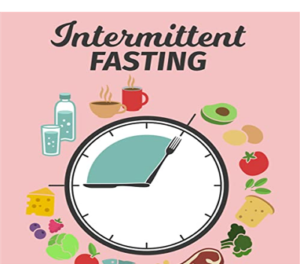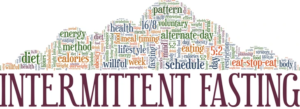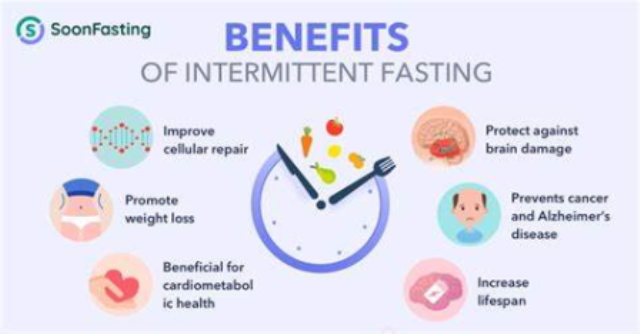Introduction
- Intermittent fasting (IF) has gained widespread popularity in recent years as a potential approach for weight management, improved metabolism, and even longevity. But with so many variations of fasting schedules available, it can be challenging to determine which one is the safest and most sustainable in the long term. From the 16/8 method to the eat-stop-eat approach, each schedule has different implications for your health. To help you make an informed decision, we’ve compiled expert insights from dietitians on which intermittent fasting schedule is safest and why.

What is Intermittent Fasting?
- Intermittent fasting (IF) isn’t a traditional “diet” but rather an eating pattern that cycles between periods of eating and fasting. While the primary goal of it is often weight loss, keep in mind that the main reason IF helps with weight loss is that it makes it easier to eat fewer calories overall. If you eat massive amounts during your eating periods, you may not lose any weight at all. Proponents claim it can also improve insulin sensitivity, reduce inflammation, and increase mental clarity.
Here are the most common types of intermittent fasting schedules:
- 16/8 Method: You fast for 16 hours and eat within an 8-hour window each day. For example, you might eat between noon and 8 p.m. and fast from 8 p.m. until noon the next day.
- 5:2 Diet: You eat normally five days a week and limit your caloric intake to about 500-600 calories on the other two days.
- Eat-Stop-Eat: This involves fasting for 24 hours once or twice a week, with no caloric intake during the fasting period.
- Alternate-Day Fasting (ADF): You alternate between fasting days and eating days. On fasting days, you typically consume around 500 calories.
- Each schedule has varying effects on the body, and the “safest” option often depends on your individual health, lifestyle and goals.
How it affects your cells and hormones
- When you fast, several things happen in your body on the cellular and molecular level.
- First, human growth hormone (HGH) levels go up and insulin levels go down. Your body’s cells also change the expression of genes and initiate important cellular repair processes.
- Here are some changes that occur in your body when you fast:
- HGH: Your levels of HGH increase Trusted Source. This can help with both fat loss and muscle growth.
- Insulin: When you fast, insulin sensitivity improves, and levels of insulin decrease Trusted Source. Lower insulin levels make stored body fat more accessible.
- Cellular repair: When fasted, your cells initiate Trusted Source cellular repair processes. This includes autophagy, which means cells digest and remove old and dysfunctional proteins that build up inside them.
- Gene expression: Fasting can cause Trusted Source changes in the function of genes related to longevity and disease prevention.
The Safest Intermittent Fasting Schedule, According to Dietitians
- When it comes to choosing the safest intermittent fasting schedule, dietitians emphasize the importance of balance and sustainability. Fasting schedules that allow you to maintain essential nutrient intake, prevent extreme hunger or fatigue, and support overall health are generally considered the best. Here’s a breakdown of expert recommendations on which intermittent fasting schedules are safest:

-
The 16/8 Method:
- A Balanced and Sustainable Approach
- According to nutrition experts, the 16/8 method is one of the safest and most sustainable intermittent fasting schedules. This method allows you to fast for 16 hours, including the time spent sleeping, and eat within an 8-hour window. This schedule fits well into most people’s daily routines, making it easier to maintain over the long term.
Why it’s safe:
- Maintains nutrient balance: Since the eating window is 8 hours, you can still consume adequate nutrients across meals, which lowers the risk of nutrient deficiencies.
- Improved metabolic health: Research shows that the 16/8 method can help reduce insulin resistance and improve blood sugar regulation.
- Sustainability: It doesn’t involve extreme caloric restriction, which makes it more sustainable than longer fasting periods.
- Dietitian Erin Palinski-Wade, RD, CDE, notes that “for many individuals, the 16/8 method allows for a balanced approach to fasting without triggering extreme hunger or fatigue, making it a safer option than more restrictive patterns.”
-
The 5:2 Diet:
- Flexible and Less Intense
- The 5:2 diet, where you eat normally five days a week and reduce caloric intake on two non-consecutive days, is another popular and relatively safe approach. During fasting days, you’re encouraged to consume around 500-600 calories.
Why it’s safe:
- Flexible:
- Since fasting is only limited to two days per week, it’s less likely to cause long-term issues like fatigue or nutrient deficiencies.
- Easy to implement:
- The two fasting days can be adjusted according to individual schedules, allowing for more flexibility than daily fasting methods.
- Reduced risk of overeating:
- The calorie restriction on fasting days ensures that there are no huge fluctuations in energy intake, which minimizes the risk of binge eating.
- Dietitian Michele Promaulayko, author of “Thinner in 30,”
- suggests that “the 5:2 diet is one of the easiest approaches for most people to incorporate into their lives because it doesn’t require fasting every day, and there’s still plenty of room for normal, healthy eating.”
-
Avoid Extreme Fasting (Eat-Stop-Eat and Alternate-Day Fasting)
- While the Eat-Stop-Eat (24-hour fasting) and Alternate-Day Fasting (ADF) schedules have their proponents, many dietitians caution against these more extreme fasting methods, especially for beginners or those with certain health conditions.
- Why they can be unsafe:
- Increased risk of nutrient deficiencies: Fasting for longer periods can make it harder to meet your nutritional needs, leading to deficiencies.
- Potential for overeating: After a full day of fasting, some people may overeat on eating days, leading to digestive discomfort or weight gain.
- Increased fatigue: Longer fasting periods may cause a dip in energy levels, irritability, and concentration issues.
- Registered Dietitian Keri Gans advises, “Extreme fasting schedules like ADF or Eat-Stop-Eat may work for some people, but they’re not necessarily safe for everyone, especially if you have underlying health issues such as diabetes or low blood pressure.”

Other Tips for Intermittent Fasting
- It can be challenging to stick to an intermittent fasting program.
The following tips may help people stay on track and maximize the benefits of intermittent fasting:
- Staying hydrated: Drink lots of water and calorie-free drinks, such as herbal teas, throughout the day. This can help ensure you get enough electrolytes, sodium, and potassium chloride.
- Avoiding thinking about food: Plan plenty of distractions on fasting days to avoid thinking about food, such as catching up on paperwork or going to see a movie.
- Resting and relaxing: Avoid strenuous activities on fasting days, although light exercise such as yoga may be beneficial.
- Making every calorie count: If the chosen plan allows some calories during fasting periods, select nutrient-dense foods that are rich in protein, fiber, and healthful fats. Examples include beans, lentils, eggs, fish, nuts, avocado, and unprocessed meats.
- Eating high volume foods: Select filling yet low calorie foods, which include popcorn, raw vegetables, and fruits with high water content, such as grapes and melon.
- Increasing the taste without the calories: Season meals generously with garlic, herbs, spices, or vinegar. These foods are extremely low in calories yet are full of flavor.
- Choosing nutrient-dense foods after the fasting period: Eating foods that are high in fiber, vitamins, minerals, and other nutrients helps to keep blood sugar levels steady and prevent nutrient deficiencies. A balanced diet will also contribute to weight loss and overall health.
-
Additional Considerations for Safety
- When deciding on an intermittent fasting schedule, dietitians also highlight other factors to ensure safety:
- Consult with a healthcare provider:
- If you have a medical condition, are pregnant or breastfeeding, or are taking medication, it’s important to consult with a doctor or dietitian before starting an intermittent fasting regimen.
- Listen to your body:
- If you experience dizziness, weakness, or extreme hunger during a fasting period, it may be a sign that the fasting schedule is too aggressive for you.
- Stay hydrated:
- Fasting can sometimes lead to dehydration if you’re not careful. Drink plenty of water throughout the day, especially during fasting periods.
- Focus on nutrient-dense foods:
- During your eating windows, prioritize nutrient-rich foods (like fruits, vegetables, lean proteins, and whole grains) to ensure you’re getting all the necessary vitamins and minerals.

-
Safety and side effects
- Hunger is the main side effect of IF. You may also feel weak, and your brain may not perform as well as you’re used to. This might only be temporary, as it can take some time for your body to adapt to the new meal schedule.
- If you have a medical condition, you should speak with your doctor before trying IF.
- This is particularly important if you:
- have diabetes
- have problems with blood sugar regulation
- have low blood pressure
- take medications
- are underweight
- have a history of eating disorders
- are trying to conceive
- have a history of amenorrhea
- are pregnant or nursing
Frequently Asked Questions
Here are answers to the most common questions about intermittent fasting.
Can I drink liquids during the fast?
- Yes. Water, coffee, tea and other calorie-free beverages are fine. Coffee can be particularly beneficial Trusted Source during a fast as it can suppress appetite.
Isn’t it unhealthy to skip breakfast?
- No, skipping breakfast won’t harm your health. If you make sure to eat healthy food for the rest of the day, then the practice is perfectly healthy.
Can I take supplements while fasting?
- Yes. However, keep in mind that some supplements, like fat-soluble vitamins, may work better when taken with meals containing a fat source. Many supplements can also cause an upset stomach when you take them without food.
Can I work out while fasted?
- Yes, fasted workouts are fine. Expect to feel a bit more tired and weaker than usual, so take it easy and listen to your body.
Will fasting cause muscle loss?
- All weight loss methods can cause muscle loss. Aim to eat plenty of protein Trusted Source and engage in strengthening exercises like lifting weights.
Getting started with intermittent fasting
Chances are that you’ve already done many intermittent fasts in your life.
- If you’ve ever eaten dinner, then slept late and not eaten until lunch the next day, you’ve already fasted for over 16 hours. Some people intuitively eat this way because they simply don’t feel hungry in the morning.
- Many people consider the 16/8 method the simplest and most sustainable form of IF — you might want to try this practice first.
- If you find it easy and feel good during the fast, then maybe try moving on to more advanced fasting methods. Another approach is to fast whenever it’s convenient. Simply skip meals from time to time when you’re not hungry or don’t have time to cook.
- There is no need to follow a structured IF plan to derive at least some of the benefits. Experiment with the different approaches and find something that you enjoy and fits your schedule.
The Bottom Line
- IF is not something that anyone needs to do. It’s simply one of many lifestyle strategies that can improve your health. Eating nutrient-dense food, exercising, and getting enough sleep are still the most important factors to focus on.
- At the end of the day, there is no one-size-fits-all solution when it comes to nutrition. The best diet for you is the one you can stick to in the long run.
- If you feel good when fasting and find it to be a sustainable way of eating, it can be a very powerful tool to lose weight and improve your health.
Conclusion
- While there are many intermittent fasting schedules available, the 16/8 method and 5:2 diet are often recommended by dietitians as some of the safest and most sustainable options.
- These methods allow for balanced nutrition and minimize the risks of nutrient deficiencies, extreme hunger, or fatigue. As with any dietary plan, it’s important to choose an approach that fits your individual needs and lifestyle.
- If you’re considering intermittent fasting, make sure to consult with a healthcare professional, listen to your body, and stay hydrated. With the right approach, intermittent fasting can be an effective and safe strategy for improving health and well-being.
References:
- Palinski-Wade, E. (2021). The Benefits of Intermittent Fasting: A Guide to the 16/8 Method. Healthline. Retrieved from [https://www.healthline.com/nutrition/16-8-intermittent-fasting](https://www.healthline.com/nutrition/16-8-intermittent-fasting)
- Gans, K. (2020). The Best Intermittent Fasting Schedules for Your Health. WebMD. Retrieved from [https://www.webmd.com/diet/obesity/ss/slideshow-fasting-schedules](https://www.webmd.com/diet/obesity/ss/slideshow-fasting-schedules)
- Promaulayko, M. (2021). The Flexibility of the 5:2 Diet. Well+Good. Retrieved from [https://www.wellandgood.com/5-2-intermittent-fasting/](https://www.wellandgood.com/5-2-intermittent-fasting/)
- Gans, K. (2022). Why the 5:2 Diet Is Considered a Safer Option for Intermittent Fasting. Eat This, Not That. Retrieved from [https://www.eatthis.com/5-2-diet-safe/](https://www.eatthis.com/5-2-diet-safe/)
- Harvard T.H. Chan School of Public Health. (2021). Intermittent Fasting and Metabolic Health: What Dietitians Want You to Know. Retrieved from [https://www.hsph.harvard.edu/nutritionsource/what-should-you-eat/intermittent-fasting/]
- (https://www.hsph.harvard.edu/nutritionsource/what-should-you-eat/intermittent-fasting/)
- https://www.health.harvard.edu/staying-healthy/can-intermittent-fasting-help-with-weight-loss


I was just searching for someone to give me professional advice regarding losing weight..i am really worried and want to lose weight in next couple of months…this blog was very informative indeed 💯..definitely gonna read and follow more health related blogs from this source..
The latest concept of “My Plate” can be modified according to the individual needs of the person. You can create it according to your requirements amid weight loss without any weakness. For example you can replace sweet and fried foods with fresh fruits and vegetables having very low caloric values.
Thanks for sharing. I read many of your blog posts, cool, your blog is very good.
Thank you for your sharing. I am worried that I lack creative ideas. It is your article that makes me full of hope. Thank you. But, I have a question, can you help me?